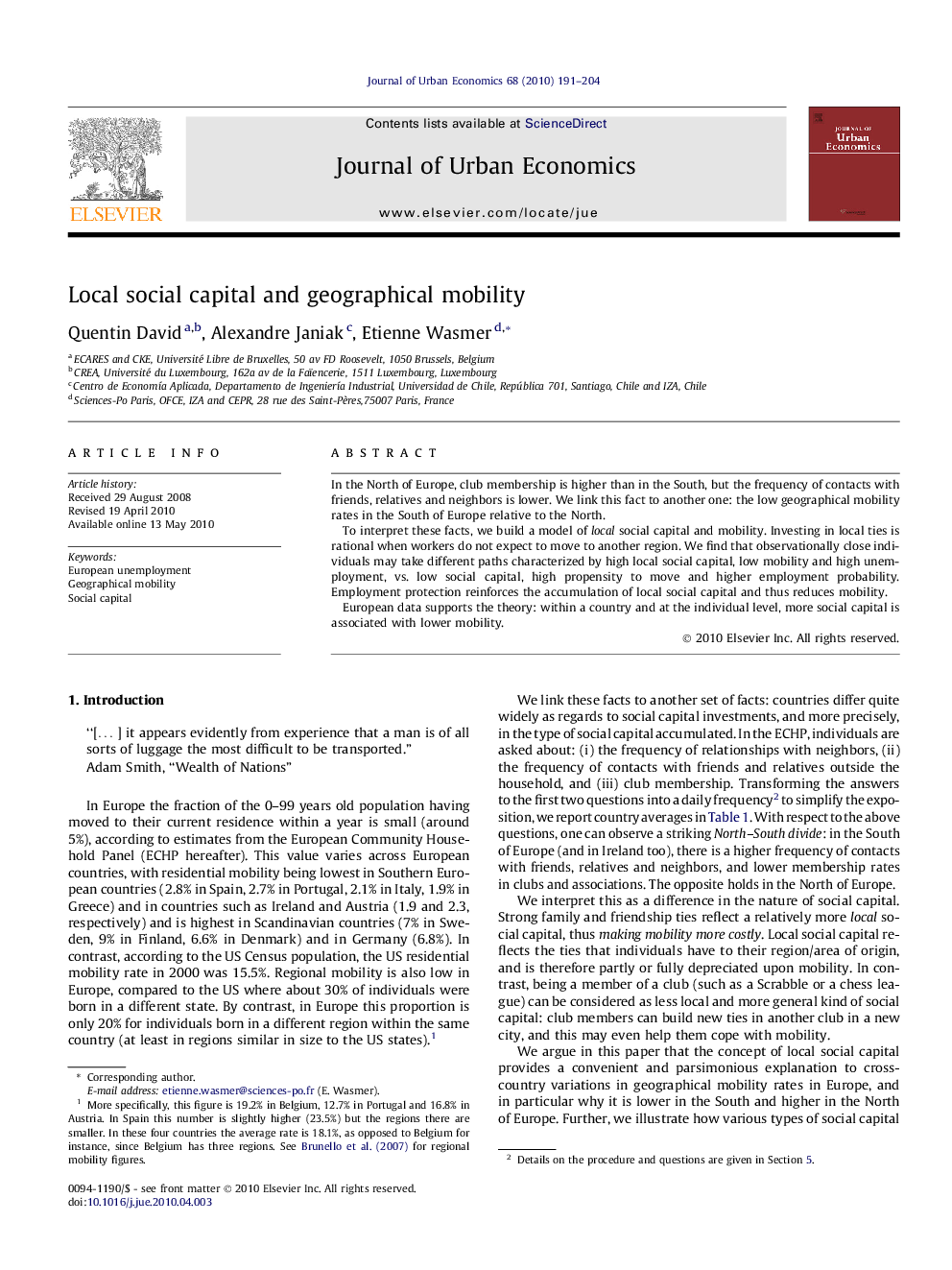| Article ID | Journal | Published Year | Pages | File Type |
|---|---|---|---|---|
| 971288 | Journal of Urban Economics | 2010 | 14 Pages |
In the North of Europe, club membership is higher than in the South, but the frequency of contacts with friends, relatives and neighbors is lower. We link this fact to another one: the low geographical mobility rates in the South of Europe relative to the North.To interpret these facts, we build a model of local social capital and mobility. Investing in local ties is rational when workers do not expect to move to another region. We find that observationally close individuals may take different paths characterized by high local social capital, low mobility and high unemployment, vs. low social capital, high propensity to move and higher employment probability. Employment protection reinforces the accumulation of local social capital and thus reduces mobility.European data supports the theory: within a country and at the individual level, more social capital is associated with lower mobility.
